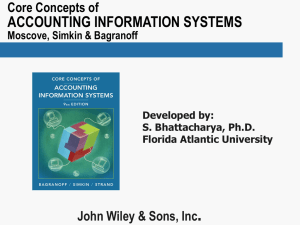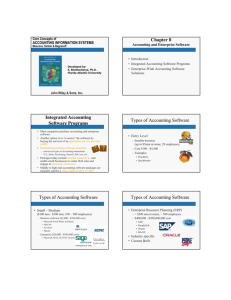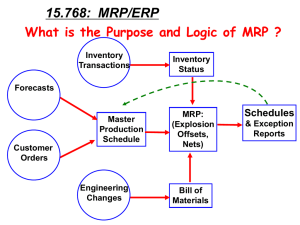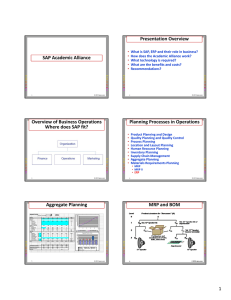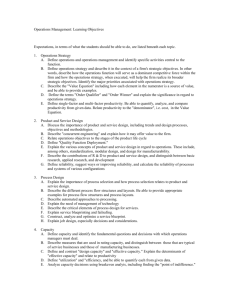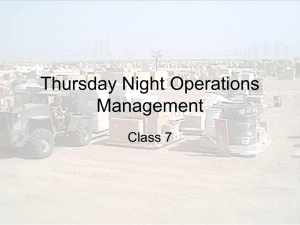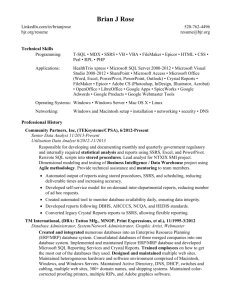Operations Management Study Guide Inventory Management
advertisement
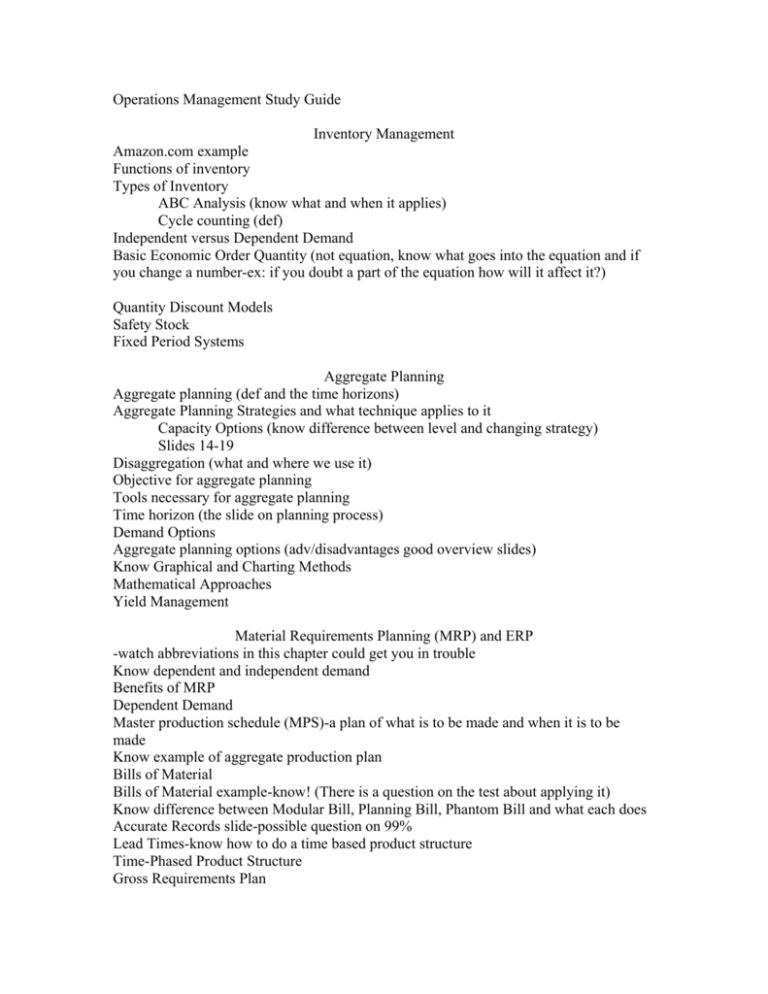
Operations Management Study Guide Inventory Management Amazon.com example Functions of inventory Types of Inventory ABC Analysis (know what and when it applies) Cycle counting (def) Independent versus Dependent Demand Basic Economic Order Quantity (not equation, know what goes into the equation and if you change a number-ex: if you doubt a part of the equation how will it affect it?) Quantity Discount Models Safety Stock Fixed Period Systems Aggregate Planning Aggregate planning (def and the time horizons) Aggregate Planning Strategies and what technique applies to it Capacity Options (know difference between level and changing strategy) Slides 14-19 Disaggregation (what and where we use it) Objective for aggregate planning Tools necessary for aggregate planning Time horizon (the slide on planning process) Demand Options Aggregate planning options (adv/disadvantages good overview slides) Know Graphical and Charting Methods Mathematical Approaches Yield Management Material Requirements Planning (MRP) and ERP -watch abbreviations in this chapter could get you in trouble Know dependent and independent demand Benefits of MRP Dependent Demand Master production schedule (MPS)-a plan of what is to be made and when it is to be made Know example of aggregate production plan Bills of Material Bills of Material example-know! (There is a question on the test about applying it) Know difference between Modular Bill, Planning Bill, Phantom Bill and what each does Accurate Records slide-possible question on 99% Lead Times-know how to do a time based product structure Time-Phased Product Structure Gross Requirements Plan MRP Management Finite Capacity Scheduling Know time buckets Supermarket Lot-sizing techniques Lot-sizing summary (look over) Know ERP is an extension of MRP Know Distribution Resource Planning (DRP) and how it’s different from MRP Enterprise Resource Planning (ERP) Advantages of ERP Systems (IMPORTANT) What do you need to do to achieve ERP? (All have to be working with same data) Disadvantages of ERP Systems Common characteristics of ERP Just-in-Time and Lean Production Systems Just-in-time (know it’s a philosophy) Waste Reduction Pull vs. Push systems JIT and competitive advantage (good overview slide Suppliers JIT partnerships (slides 19-23) Distance Reduction Impact on employees Cross trained? Reduce Variability slide-trying to navigate through the water Reduce setup costs Kanban The 5 S’s (that become the 7 S’s) Seven wastes
